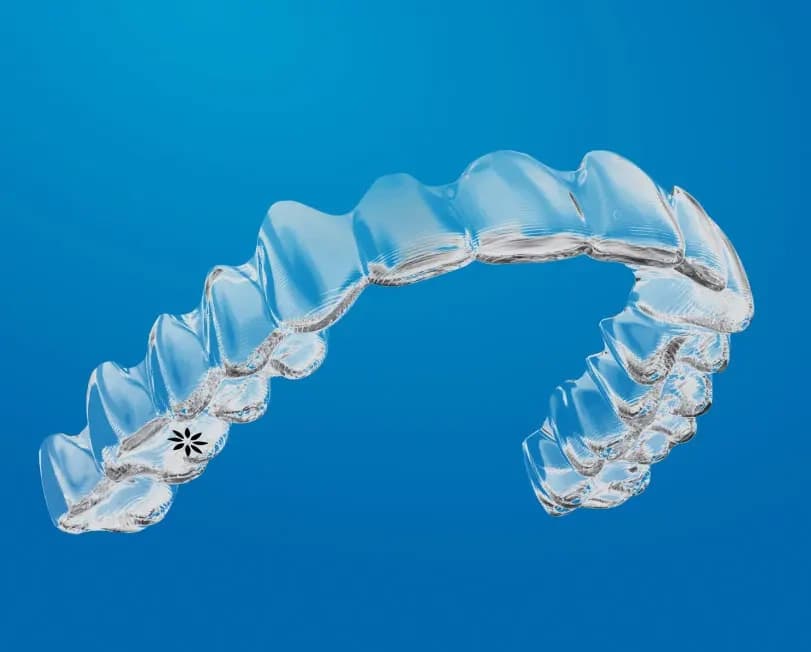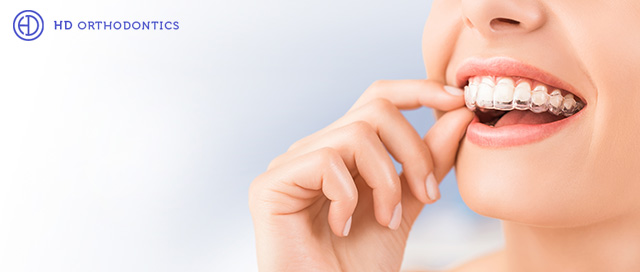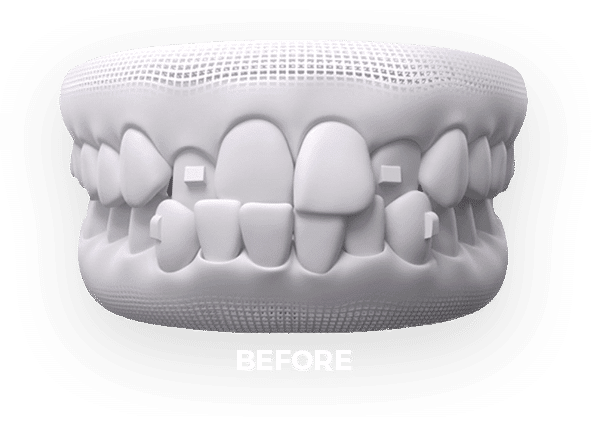Invisalign vs. Standard Braces: Which Alternative Is Right for You?
When considering orthodontic therapy, the choice in between Invisalign and conventional dental braces presents numerous crucial variables that warrant mindful analysis. Invisalign uses a very discreet choice with detachable aligners, while standard braces provide an extra visible yet effective solution for extreme imbalance.
Summary of Treatment Choices

On the other hand, typical dental braces contain steel braces and wires that are adhered to the teeth. This approach uses constant stress in time to accomplish alignment. While efficient for complicated orthodontic concerns, standard dental braces need normal brows through for modifications and can pose challenges in keeping oral health because of the difficulty of cleaning up around braces and wires.
Both alternatives have their qualities, and the choice typically pivots on specific dental conditions, way of life preferences, and patient conformity. Eventually, seeking advice from an orthodontic expert is critical for determining the most suitable treatment strategy tailored to individual needs. Recognizing the subtleties of each option can considerably influence the total success of orthodontic treatment.
Aesthetic Factors To Consider
A substantial variable affecting the selection in between Invisalign and typical dental braces is the visual charm each therapy uses. Invisalign aligners are crafted from clear plastic, making them essentially undetectable when worn. This very discreet appearance is specifically attracting grownups and teenagers that might feel uneasy about their orthodontic therapy. The capability to preserve an all-natural smile throughout the alignment process can significantly boost the client's self-confidence in specialist and social settings.
On the other hand, standard braces contain metal brackets and cables, which can be extra recognizable. While improvements in orthodontic technology have resulted in the growth of smaller brackets and tinted elastics, typical dental braces still preserve an even more obvious account. For some people, the exposure of dental braces may discourage them from looking for necessary treatment.
Eventually, the option in between Invisalign and typical dental braces may depend upon personal choices concerning appearances. People who focus on discernment often lean toward Invisalign, while those who are much less worried concerning visibility might opt for traditional braces. Recognizing the aesthetic ramifications of each option is essential for making a notified choice that aligns with one's lifestyle and preferences.
Comfort and Convenience

In terms of benefit, Invisalign aligners are removable, making it possible for clients to enjoy their favorite foods without constraint and preserve optimum dental health. Cleaning and flossing are streamlined, as the aligners can be gotten during these regimens, whereas conventional dental braces need careful maneuvering around cables and braces.
Furthermore, Invisalign's progressive system enables fewer orthodontic gos to. Patients typically get numerous sets of aligners at when, which can simplify the therapy procedure and reduce time invested in the orthodontist's chair. On the other hand, standard dental braces demand routine adjustments, making them much less practical for those with active timetables. Invisalign. On the whole, the convenience and ease of Invisalign make it an attractive choice for several individuals looking for orthodontic therapy.
Therapy Period and Effectiveness
While both Invisalign and typical dental braces are effective in correcting dental imbalances, the period of therapy can differ considerably in between both choices. Usually, Invisalign therapy can take anywhere from 12 to 18 months, depending on the complexity of the instance. The clear aligners function by slowly changing teeth right into their desired settings, and routine follow-ups with an orthodontist aid guarantee development stays on track.
On the other hand, typical braces often need a longer dedication, typically varying from 18 months to 3 years. This is due to their fixed nature and using cords and brackets, which can be much more reliable for intricate situations and extreme misalignments (Invisalign). The treatment efficiency of typical braces is well-documented, as they enable for exact adjustments and higher control over tooth motion
Inevitably, the choice between Invisalign and conventional braces may depend upon both the anticipated treatment duration and the specific oral problems at hand. Consulting with an orthodontist is critical, as they can offer customized referrals based upon private requirements, making sure the chosen method straightens with preferred durations and results.
Cost Contrast and Insurance Options
Cost plays a considerable function in the decision-making procedure for individuals considering orthodontic treatment, whether selecting Invisalign or conventional dental braces. Typically, the price of Invisalign varieties from $3,000 to $8,000, while traditional braces normally set you back between $2,000 and $6,000. Aspects affecting these expenses consist of the complexity of the instance, the duration of therapy, and geographical location.
Insurance policy protection can dramatically affect out-of-pocket costs. Several oral insurance coverage strategies give partial insurance coverage for orthodontic treatments, but the specifics can differ widely. It is important for individuals to pop over here examine their insurance plan to figure out the degree of protection for either choice. Usually, conventional dental braces might be a lot more frequently covered by insurance coverage strategies compared to Invisalign, which some insurance providers categorize as an aesthetic treatment.
Furthermore, a number of orthodontic practices use versatile settlement plans, making both treatment alternatives a lot more available. Clients should ask about prospective financing choices and discounts for in advance payments. Evaluating the overall price, consisting of insurance benefits and layaway plan, is vital for making an informed decision Home Page that aligns with both visual preferences and budget plan factors to consider.

Final Thought
In recap, the selection in between Invisalign and conventional braces hinges on numerous factors, including visual preferences, comfort, treatment duration, and price. Invisalign uses a very discreet, detachable alternative that facilitates oral health and nutritional adaptability, while typical braces may be preferable for complicated oral problems and usually come with a reduced cost factor. Eventually, appointment with an orthodontist is necessary to examine private scenarios and determine the most read this post here suitable treatment choice for accomplishing ideal dental placement.
When considering orthodontic therapy, the choice between Invisalign and standard dental braces presents numerous essential elements that warrant careful examination.Comparing Invisalign and conventional braces discloses unique treatment alternatives for orthodontic modification.While both Invisalign and traditional dental braces are effective in correcting dental imbalances, the period of therapy can differ significantly between the two options.Cost plays a considerable function in the decision-making procedure for people considering orthodontic therapy, whether opting for Invisalign or traditional braces.In recap, the selection in between Invisalign and traditional braces pivots on numerous aspects, including visual choices, comfort, treatment period, and expense.